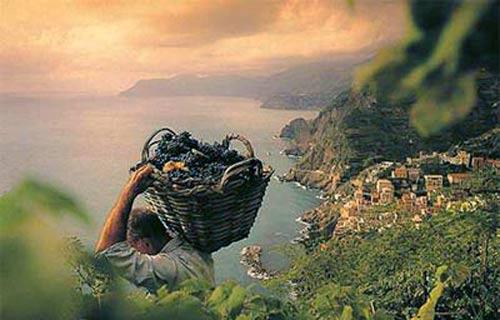Research Reveals Italians Taught French How To Make Wine

Early French winemakers learned how to make wine from the Italians, according to researchers at the University of Pennsylvania.
Research has revealed that the arrival of Italian wine in France meant that locals copied the Italians and began to make wine. The French gave up their usual tipple, which was a hybrid drink of honey, wheat/barley, native wild fruits such as apple and herbs such as bog myrtle, yarrow and heather.
The truth about early French viticulture was revealed after Etruscan amphorae and a limestone wine press were discovered at the ancient port site of Lattara in southern France. The discovery has provided the earliest known biomolecular archaeological evidence of grape wine and winemaking. They point to the beginnings of a Celtic or Gallic vinicultural industry in France c. 500BC to 400BC.
Details of the discovery were published as ‘The Beginning of Viniculture in France’ in the latest issue of ‘Proceedings of the National Academy of Sciences’. Dr. Patrick McGovern, director of the Biomolecular Archaeology Laboratory at the University of Pennsylvania Museum of Archaeology and Anthropology is the lead author on the paper, which was researched and written in collaboration with colleagues from France and the USA.
Dr. McGovern said: “France’s rise to world prominence in the wine culture has been well documented, especially since the 12th century, when the Cistercian monks determined by trial and error that Chardonnay and Pinot Noir were the best cultivars to grow in Burgundy.”
He added: “What we haven’t had is clear chemical evidence, combined with botanical and archaeological data, showing how wine was introduced into France and initiated a native industry.
“Now we know that the ancient Etruscans lured the Gauls into the Mediterranean wine culture by importing wine into southern France. This built up a demand that could only be met by establishing a native industry, likely done by transplanting the domesticated vine from Italy, and enlisting the requisite winemaking expertise from the Etruscans.”
Merchant quarters inside a walled settlement at the archaeological site of Lattara, c. 525BC to 475BC, held numerous Etruscan amphorae. Those analysed showed signs of residue on their interior bases where precipitates of liquids, such as wine, collect. Judging by their shape and other features, they were assigned to a specific Etruscan amphora type, likely manufactured at the city of Cisra (modern Cerveteri) in central Italy.
After sample extraction, ancient organic compounds were identified by a combination of state-of-the-art chemical techniques. All the samples were positive for tartaric acid/tartrate, which is the biomarker for the Eurasian grape and wine in the Middle East and Mediterranean, as well as compounds deriving from pine tree resin. Herbal additives to the wine were also identified, including rosemary, basil and/or thyme, which are native to central Italy where the wine was likely made.
Nearby, an ancient limestone pressing platform dating to c. 425BC was discovered. Tartaric acid/tartrate was detected in the limestone, demonstrating that the installation was a winepress. Masses of several thousand domesticated grape seeds, pedicels and even skin, excavated near the press, attest to its use for crushing transplanted, domesticated grapes and local wine production. Olives were extremely rare in Lattara until Roman times. This is the first clear evidence of winemaking on French soil.
Topic:Culture France Ancient Etruria Wine
You may also be interested in...
Latest property in Italy
370 m²
7 Bedrooms
279000
210 m²
4 Bedrooms
135000
270 m²
4 Bedrooms
395000
11 Bedrooms
790000
0 m²
8 Bedrooms
0
What to do in Italy
Speak, live and enjoy Italian with Renata: homestay experience in the heart of Milan, in-person and online lessons
8-day Puglia small group guided tours, Southern Italy








